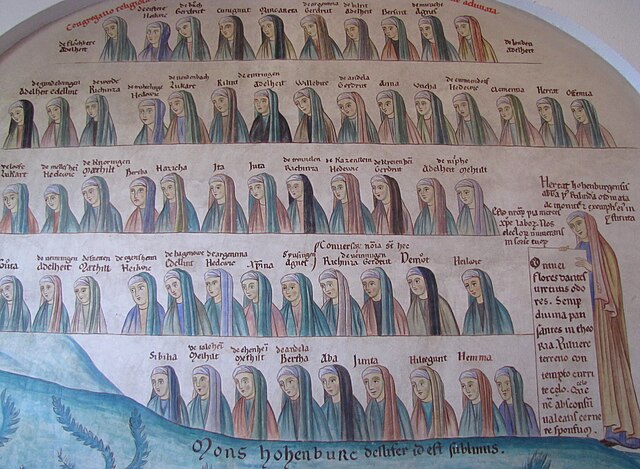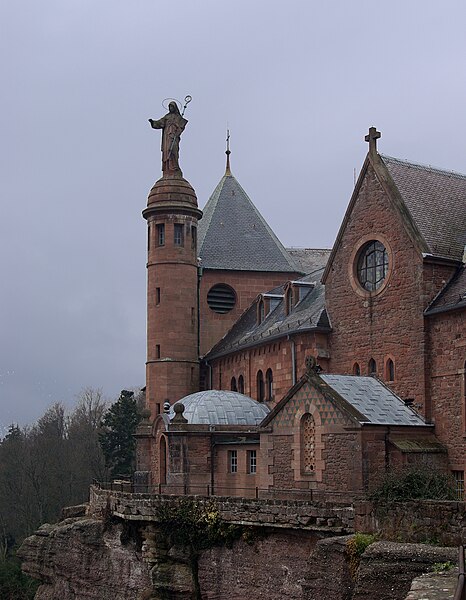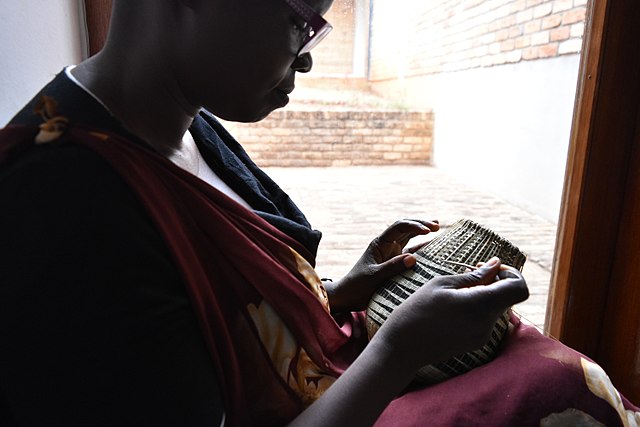Herrad of Landsberg was a 12th-century Alsatian nun and abbess of Hohenburg Abbey in the Vosges mountains. She was known as the author of the pictorial encyclopedia Hortus deliciarum.
Herrad of Landsberg Selfportrait from Hortus deliciarum, c. 1180. The description in Latin reads: "Herrat hohenburgensis abbatissa post Rilindam ordinata ac monitis et exemplis eius instituta". These are the initial words of the description from the last miniature (fol. 322–323) of the Hortus deliciarum.
Wall painting depicting nuns of Hohenburg Abbey. The Latin inscription reads: "Mons Hohenburc dellifer (sic) id est sublimus".
Hohenburg Abbey at the Mont St Odile
The Three Magi, an illustration from the reproductions of the Hortus deliciarum by Christian Moritz Engelhardt, 1818
The absence of women from the canon of Western art has been a subject of inquiry and reconsideration since the early 1970s. Linda Nochlin's influential 1971 essay, "Why Have There Been No Great Women Artists?", examined the social and institutional barriers that blocked most women from entering artistic professions throughout history, prompted a new focus on women artists, their art and experiences, and contributed inspiration to the Feminist art movement. Although women artists have been involved in the making of art throughout history, their work, when compared to that of their male counterparts, has been often obfuscated, overlooked and undervalued. The Western canon has historically valued men's work over women's and attached gendered stereotypes to certain media, such as textile or fiber arts, to be primarily associated with women.
Bridget Riley, Bolt of Colour, 2017–2019 Chinati Foundation, Marfa, Texas
Gwion Gwion rock paintings found in the north-west Kimberley region of Western Australia
Igiseke, traditional woven basket made by women in the Rift valley region
Traditional basket weaving in Rwanda and Burundi








